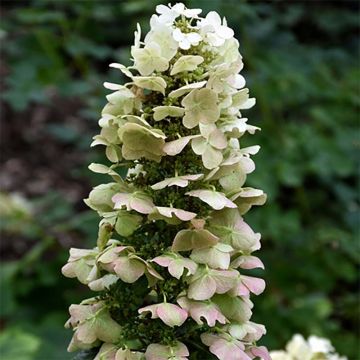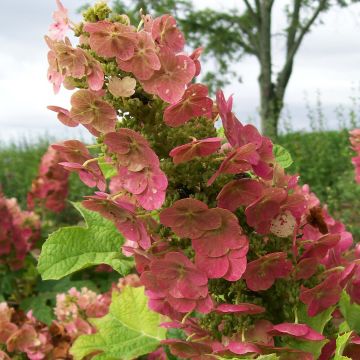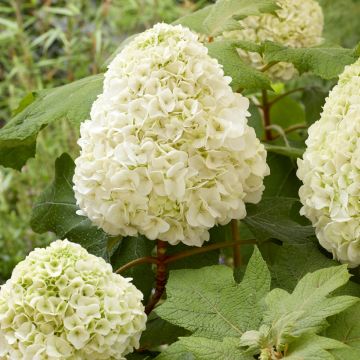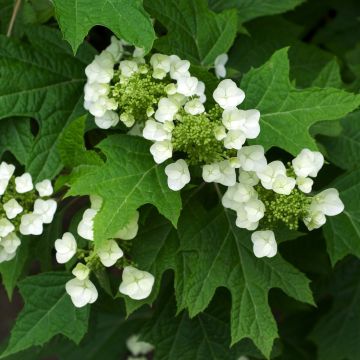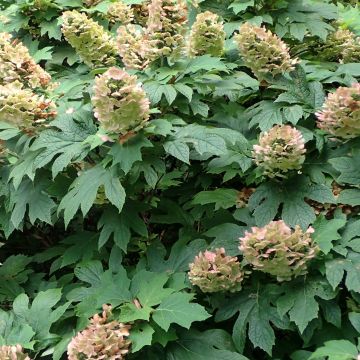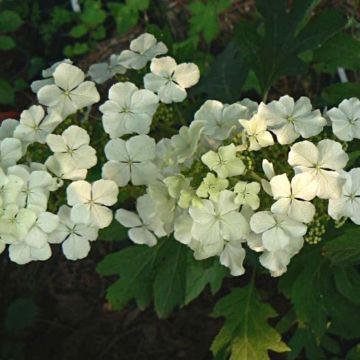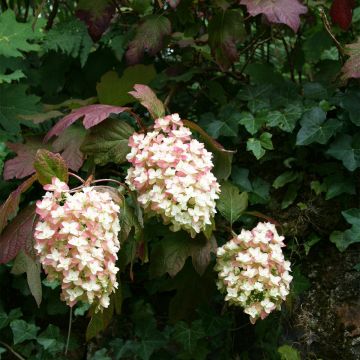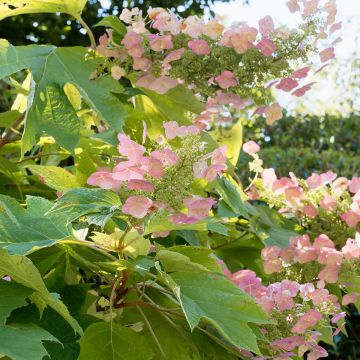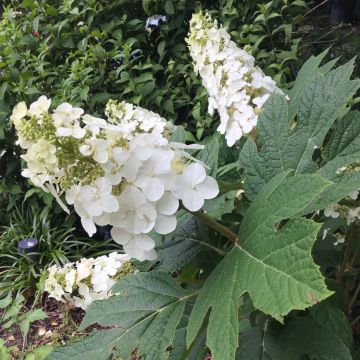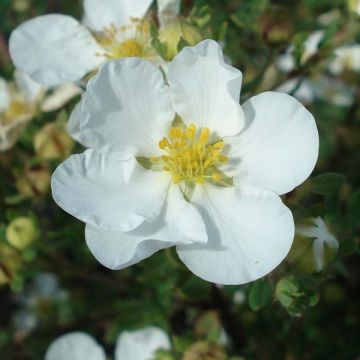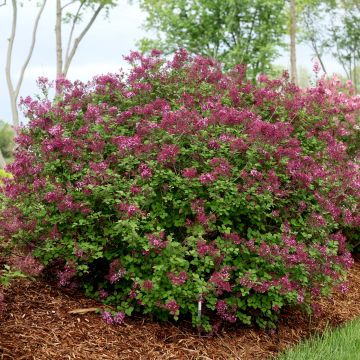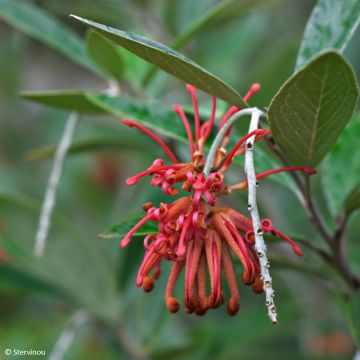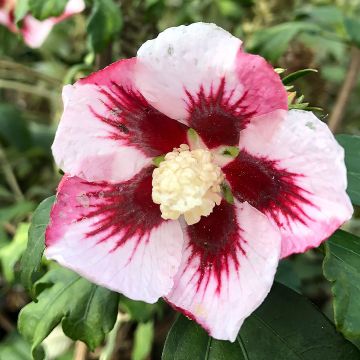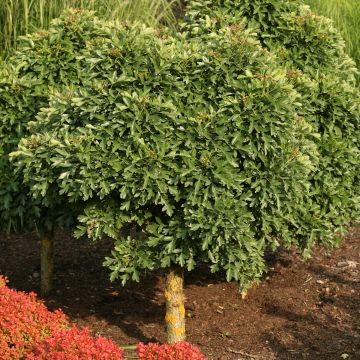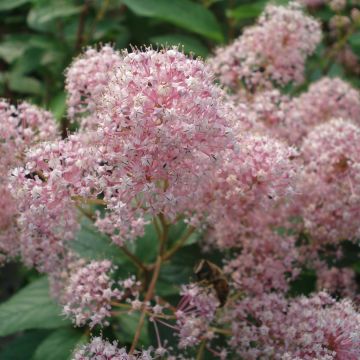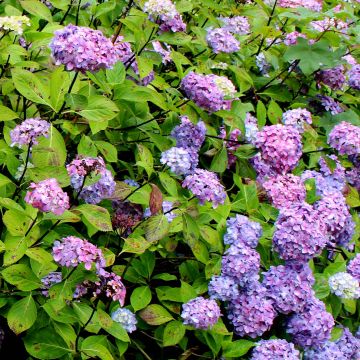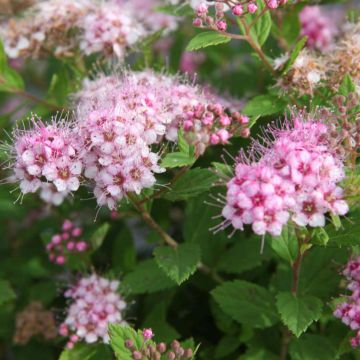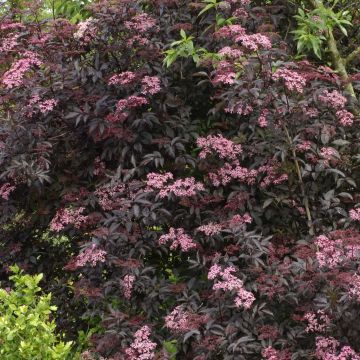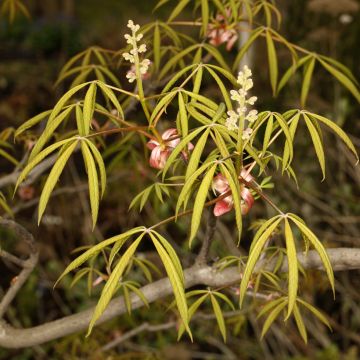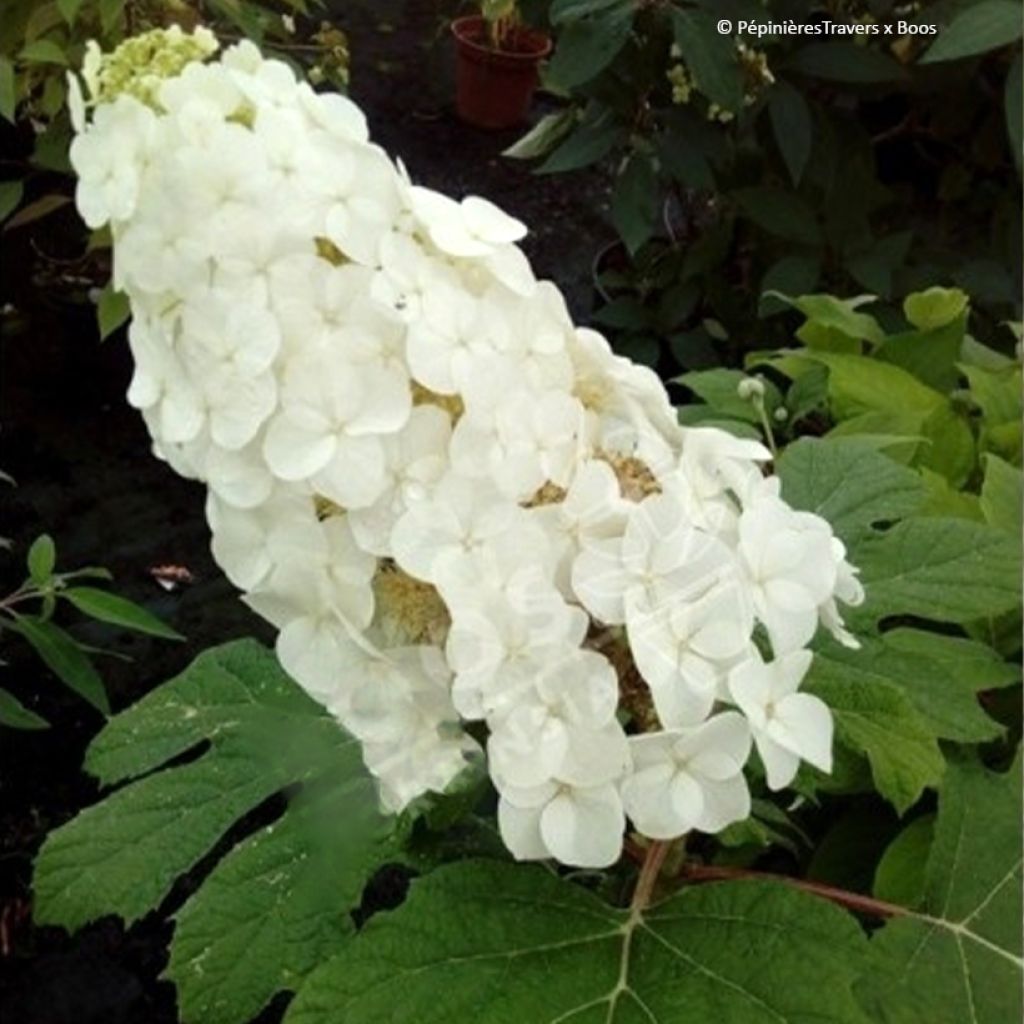

Hydrangea quercifolia Amethyst
Hydrangea quercifolia Amethyst
Hydrangea quercifolia Amethyst
Oakleaf Hydrangea
This item cannot be shipped to the selected country
Delivery charge from €5.90
More information
Schedule delivery date,
and select date in basket
This plant carries a 24 months recovery warranty
More information
We guarantee the quality of our plants for a full growing cycle, and will replace at our expense any plant that fails to recover under normal climatic and planting conditions.
From €5.90 for pickup delivery and €6.90 for home delivery
Express home delivery from €8.90.
Does this plant fit my garden?
Set up your Plantfit profile →
Description
Hydrangea quercifolia 'Amethyst' is a vigorous variety of Oakleaf Hydrangea, appreciated for its large cream-white inflorescences and beautiful autumn colours. Its large panicles turn pink, then red and purple as they fade, creating a remarkable symphony of colour with the autumn foliage. It is a beautiful deciduous shrub, decorative for nine months out of twelve. Like all "oakleaf" hydrangeas, this hydrangea is undemanding in terms of soil and climate.
Hydrangea quercifolia 'Amethyst' is similar to 'Snow Queen', but the plant is slightly more vigorous and its inflorescences have more large decorative sterile florets. The species, Hydrangea quercifolia, from the hydrangea family, is mainly native to the southwest United States, particularly the Mississippi Valley. It can be found growing on cliffs, in moist woods, in ravines, and along riverbanks, from Georgia to Louisiana, through Florida. It is a large deciduous shrub, reaching a height of 4m in its natural habitat and spreading up to 3.50m in width through the production of shoots. It is characterised by large lobed leaves, which resemble oak leaves. It is appreciated for its superb autumn colours and its large upright white panicles composed of small frothy fertile flowers surrounded by larger fertile florets. In the garden, it is one of the easiest hydrangeas to grow: it is hardy beyond -20°C, tolerates some limestone in the soil, and can withstand heat and occasionally dry soil in summer if it is deep.
The 'Amethyst' cultivar was discovered in the United States by Dr. Michael Dirr near Cincinnati, Ohio. It has upright conical inflorescences that are 15cm long, with cream-white fertile florets that quickly turn wine red if the plant receives some sun. This colour is long-lasting on the plant or in fresh or dried bouquets. Flowering begins in June-July, depending on the climate, on old wood. The compact shrub reaches between 1.50m and 1.80m in all directions. The large, dark green, 12-14cm long leaves are deeply lobed with coarsely toothed edges. In late summer, they take on fantastic shades of red to violet before falling in October. The bark of this variety peels over time, revealing a new and shiny cinnamon-coloured wood, which is decorative in winter.
Hydrangea quercifolia 'Amethyst' likes slightly sunny exposures that will enhance its autumn colours. It can be used in shrub borders or an informal hedge. It can be associated with paniculate hydrangeas, as well as with guelder roses (Viburnum opulus) or wild barberries (Berberis sauvages).
Report an error about the product description
Plant habit
Flowering
Foliage
Botanical data
Hydrangea
quercifolia
Amethyst
Hydrangeaceae
Oakleaf Hydrangea
Cultivar or hybrid
Other Hydrangea Quercifolia
Planting and care
This 'Amethyst' oakleaf hydrangea requires a sunny exposure to enhance autumn colours, but it doesn't like excessively hot exposures: morning sun or shade from a large tree during the hottest hours are preferable, especially in very sunny and hot regions. It prefers humus-bearing, neutral to acidic soil, but tolerates limestone better than other hydrangeas after careful planting in a hole filled with a mixture of leaf compost and loam. Plant it in deeply worked soil. A good base fertiliser (horn or dehydrated blood) will promote the establishment of your plant and nourish it without risk of burning. If your soil tends to be very dry in summer, create a surface watering basin and mulch in summer. Once well established, this hydrangea can do without watering in summer, except in southern regions where it will appreciate weekly watering, or every two weeks depending on the weather. In late summer, it is best to leave the dry inflorescences, which will protect the terminal shoots of the branches in winter. You can cut all the dry flowers at the end of February or on the first warm days. Its spring vegetation is quite late.
Planting period
Intended location
Care
This item has not been reviewed yet - be the first to leave a review about it.
Summer-flowering shrubs
Haven't found what you were looking for?
Hardiness is the lowest winter temperature a plant can endure without suffering serious damage or even dying. However, hardiness is affected by location (a sheltered area, such as a patio), protection (winter cover) and soil type (hardiness is improved by well-drained soil).

Photo Sharing Terms & Conditions
In order to encourage gardeners to interact and share their experiences, Promesse de fleurs offers various media enabling content to be uploaded onto its Site - in particular via the ‘Photo sharing’ module.
The User agrees to refrain from:
- Posting any content that is illegal, prejudicial, insulting, racist, inciteful to hatred, revisionist, contrary to public decency, that infringes on privacy or on the privacy rights of third parties, in particular the publicity rights of persons and goods, intellectual property rights, or the right to privacy.
- Submitting content on behalf of a third party;
- Impersonate the identity of a third party and/or publish any personal information about a third party;
In general, the User undertakes to refrain from any unethical behaviour.
All Content (in particular text, comments, files, images, photos, videos, creative works, etc.), which may be subject to property or intellectual property rights, image or other private rights, shall remain the property of the User, subject to the limited rights granted by the terms of the licence granted by Promesse de fleurs as stated below. Users are at liberty to publish or not to publish such Content on the Site, notably via the ‘Photo Sharing’ facility, and accept that this Content shall be made public and freely accessible, notably on the Internet.
Users further acknowledge, undertake to have ,and guarantee that they hold all necessary rights and permissions to publish such material on the Site, in particular with regard to the legislation in force pertaining to any privacy, property, intellectual property, image, or contractual rights, or rights of any other nature. By publishing such Content on the Site, Users acknowledge accepting full liability as publishers of the Content within the meaning of the law, and grant Promesse de fleurs, free of charge, an inclusive, worldwide licence for the said Content for the entire duration of its publication, including all reproduction, representation, up/downloading, displaying, performing, transmission, and storage rights.
Users also grant permission for their name to be linked to the Content and accept that this link may not always be made available.
By engaging in posting material, Users consent to their Content becoming automatically accessible on the Internet, in particular on other sites and/or blogs and/or web pages of the Promesse de fleurs site, including in particular social pages and the Promesse de fleurs catalogue.
Users may secure the removal of entrusted content free of charge by issuing a simple request via our contact form.
The flowering period indicated on our website applies to countries and regions located in USDA zone 8 (France, the United Kingdom, Ireland, the Netherlands, etc.)
It will vary according to where you live:
- In zones 9 to 10 (Italy, Spain, Greece, etc.), flowering will occur about 2 to 4 weeks earlier.
- In zones 6 to 7 (Germany, Poland, Slovenia, and lower mountainous regions), flowering will be delayed by 2 to 3 weeks.
- In zone 5 (Central Europe, Scandinavia), blooming will be delayed by 3 to 5 weeks.
In temperate climates, pruning of spring-flowering shrubs (forsythia, spireas, etc.) should be done just after flowering.
Pruning of summer-flowering shrubs (Indian Lilac, Perovskia, etc.) can be done in winter or spring.
In cold regions as well as with frost-sensitive plants, avoid pruning too early when severe frosts may still occur.
The planting period indicated on our website applies to countries and regions located in USDA zone 8 (France, United Kingdom, Ireland, Netherlands).
It will vary according to where you live:
- In Mediterranean zones (Marseille, Madrid, Milan, etc.), autumn and winter are the best planting periods.
- In continental zones (Strasbourg, Munich, Vienna, etc.), delay planting by 2 to 3 weeks in spring and bring it forward by 2 to 4 weeks in autumn.
- In mountainous regions (the Alps, Pyrenees, Carpathians, etc.), it is best to plant in late spring (May-June) or late summer (August-September).
The harvesting period indicated on our website applies to countries and regions in USDA zone 8 (France, England, Ireland, the Netherlands).
In colder areas (Scandinavia, Poland, Austria...) fruit and vegetable harvests are likely to be delayed by 3-4 weeks.
In warmer areas (Italy, Spain, Greece, etc.), harvesting will probably take place earlier, depending on weather conditions.
The sowing periods indicated on our website apply to countries and regions within USDA Zone 8 (France, UK, Ireland, Netherlands).
In colder areas (Scandinavia, Poland, Austria...), delay any outdoor sowing by 3-4 weeks, or sow under glass.
In warmer climes (Italy, Spain, Greece, etc.), bring outdoor sowing forward by a few weeks.

































